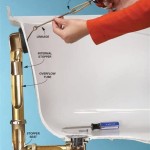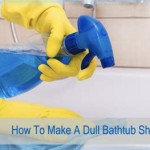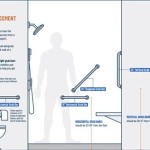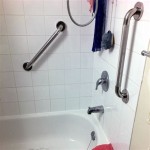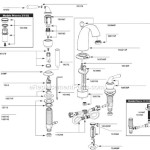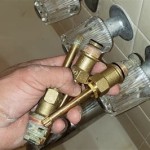How To Drain a Bathtub Clogged With Hairspray Solution
Bathtub drains frequently encounter clogs, and one common culprit is hairspray. While designed to hold hairstyles firmly in place, hairspray's adhesive properties can also bind with hair and other debris within the plumbing system, leading to significant obstructions. This article provides a comprehensive guide to safely and effectively removing hairspray clogs from bathtub drains.
Before beginning, it's important to understand why hairspray causes clogs. Most hairsprays contain polymers and resins which, when combined with water, can become sticky and attract other materials. Hair, soap scum, dead skin cells, and even mineral deposits from hard water can all become trapped in this sticky matrix, gradually building up a blockage that restricts water flow. Identifying the presence of hairspray as a contributing factor is key to selecting the appropriate removal strategy.
Initial Assessment and Preventative Measures
Prior to attempting any clearing methods, a thorough assessment of the clog’s severity is beneficial. Observe how slowly the water drains, or if it doesn’t drain at all. A completely blocked drain will obviously require more aggressive intervention than a partially obstructed one. Consider whether other factors might be contributing to the clog, such as the presence of small toys, bottle caps, or excessive hair accumulation. Knowing the full picture helps to determine the best course of action.
Before introducing any cleaning solutions, it's advisable to wear appropriate protective gear. Rubber gloves protect the hands from harsh chemicals and potential contaminants within the drain. Eye protection, such as safety glasses or goggles, shields the eyes from splashes and splatters. Good ventilation is crucial, especially when using chemical drain cleaners, to avoid inhaling potentially harmful fumes. Opening a window or turning on the bathroom exhaust fan can provide adequate ventilation.
Preventative measures are often the most effective way to avoid future clogs caused by hairspray. Consider using a drain strainer or hair catcher over the drain opening. These devices collect hair and other debris before they enter the plumbing system, significantly reducing the likelihood of clogs. Regularly cleaning the strainer or hair catcher is essential to maintain its effectiveness. Wiping down the tub after each use to remove excess hairspray residue can also help to prevent buildup over time.
Non-Chemical Solutions
When addressing a hairspray clog, beginning with non-chemical methods is generally recommended. These methods are less harsh on the plumbing system and pose less risk to personal health. A simple solution to explore is the use of hot water. Carefully pour a kettle or pot of boiling water directly down the drain. The heat may help to loosen the hairspray residue and dissolve some of the accumulated debris. This method is particularly effective for minor clogs that are not deeply entrenched within the drainpipe.
A plunger is a standard plumbing tool that can often dislodge clogs effectively. Ensure there's enough water in the tub to cover the cup of the plunger. Create a tight seal around the drain opening and vigorously plunge up and down for several minutes. The pressure created by the plunging action can often break up the clog and force it down the drain. If the water begins to drain, continue plunging to ensure the clog is completely cleared. If it does not, proceed to other methods.
Baking soda and vinegar are a common household remedy for unclogging drains. Pour approximately one cup of baking soda down the drain, followed by one cup of white vinegar. The mixture will fizz and bubble, which helps to break down the clog. Let the mixture sit for at least 30 minutes, or even overnight for more stubborn clogs. After the waiting period, flush the drain with hot water. This method is a gentler alternative to harsh chemical drain cleaners and can be effective for breaking down hairspray residue and other organic matter.
Another mechanical tool that can be quite effective is a wire coat hanger. Straighten the coat hanger as much as possible, leaving a small hook at the end. Carefully insert the wire into the drain opening and probe around to try and snag the clog. Rotate the wire and pull out any hair or debris that you can retrieve. Continue this process until you can no longer pull out any more material. After removing as much debris as possible, flush the drain with hot water to check for improved drainage.
Chemical Drain Cleaners
If non-chemical methods prove unsuccessful, chemical drain cleaners may be considered as a last resort. However, it’s crucial to exercise extreme caution when using these products. Chemical drain cleaners often contain harsh chemicals that can damage plumbing fixtures and pose health risks if not handled properly. Carefully read and follow the manufacturer's instructions before using any chemical drain cleaner. Wear protective gloves and eye protection to prevent skin and eye contact. Ensure adequate ventilation to avoid inhaling fumes.
There are different types of chemical drain cleaners available, including those containing sodium hydroxide (lye) or sulfuric acid. Choose a drain cleaner that is specifically designed for hair and organic matter clogs, as these types are more likely to be effective against hairspray residue. Pour the recommended amount of drain cleaner down the drain and allow it to sit for the specified time. Avoid leaving the drain cleaner in the drain for longer than recommended, as this can damage the pipes.
After the waiting period, thoroughly flush the drain with cold water. Never use hot water after using a chemical drain cleaner, as this can cause a chemical reaction that releases harmful fumes. Run the water for several minutes to ensure all traces of the drain cleaner are removed from the plumbing system. If the drain is still clogged after using a chemical drain cleaner, it's best to consult a professional plumber rather than attempting to use another chemical drain cleaner, as repeated use can damage the pipes.
It's also important to note that mixing different types of chemical drain cleaners can be extremely dangerous and should never be attempted. The chemical reactions can produce toxic gases or even cause explosions. If one type of drain cleaner doesn't work, it's best to try a different method altogether or consult a professional plumber.
Plumbing Snake or Auger
A plumbing snake, also known as a drain auger, is a flexible tool designed to reach deep into drainpipes and break up or retrieve clogs. This is a more effective method for stubborn clogs that are located further down the drainpipe. There are different types of plumbing snakes available, including hand-cranked models and motorized models. Choose a plumbing snake that is appropriate for the size and type of drain you are working with.
To use a plumbing snake, carefully insert the end of the snake into the drain opening. Rotate the snake as you push it further down the drainpipe. You may encounter resistance as the snake reaches the clog. Continue rotating the snake to break up the clog or to hook onto it. Once you have hooked onto the clog, slowly pull the snake back out of the drainpipe, bringing the debris with it. Dispose of the debris properly.
Repeat the process of inserting the plumbing snake, rotating it, and pulling it back out until you are no longer retrieving any debris. After removing as much debris as possible, flush the drain with hot water to check for improved drainage. If the drain is still clogged, you may need to repeat the process several times. If you are unable to clear the clog with a plumbing snake, it may be necessary to consult a professional plumber.
When using a plumbing snake, it's important to exercise caution to avoid damaging the drainpipe. Avoid forcing the snake too hard, as this can cause it to break or become lodged in the pipe. If you encounter significant resistance, try rotating the snake in the opposite direction or pulling it back slightly to reposition it. If you are unsure how to use a plumbing snake properly, it's best to consult a professional plumber.
Professional Assistance
In situations where all DIY methods have failed, or if there's a suspicion of a more complex plumbing issue, seeking professional assistance is the most prudent course of action. Plumbers possess the expertise, specialized tools, and experience to diagnose and resolve even the most stubborn drain clogs. They can utilize advanced equipment such as video cameras to inspect the inside of the drainpipe and identify the exact location and nature of the blockage. They can also employ high-pressure hydro-jetting to thoroughly clean the drainpipes and remove any remaining debris.
Attempting to self-diagnose and repair complex plumbing problems can often lead to further damage and more costly repairs in the long run. A professional plumber can quickly and efficiently resolve the issue, ensuring the integrity of the plumbing system and preventing future problems. When selecting a plumber, it's important to choose a reputable and licensed professional with experience in drain cleaning. Obtaining quotes from multiple plumbers and reading reviews can help to ensure you are getting the best value for your money.
Ultimately, maintaining a clear bathtub drain requires a combination of preventative measures, prompt attention to minor clogs, and the willingness to seek professional assistance when necessary. By following the guidelines outlined in this article, homeowners can effectively manage hairspray-related clogs and ensure the proper functioning of their bathtub drains.

5 Easy Ways To Unclog Bathtub Drain

How To Unclog Bathtub Drain Pipes Save 200 In Two Minutes

How To Easily Unclog Bathtub Shower Drain In 5 Minutes Jonny Diy

4 Steps To Fix A Clogged Bathtub Drain

What To Do If My Bathtub Is Clogged

How To Fix A Bathtub Drain Clogged By Hair Diy Joy

How To Clear A Clogged Bathtub Drain Without Harsh Chemicals

How To Unclog A Bathtub Drain Without Chemicals Family Handyman

How To Unclog Your Bathtub Drain In 5 Minutes

How To Unclog Bathtub Drain
Related Posts

